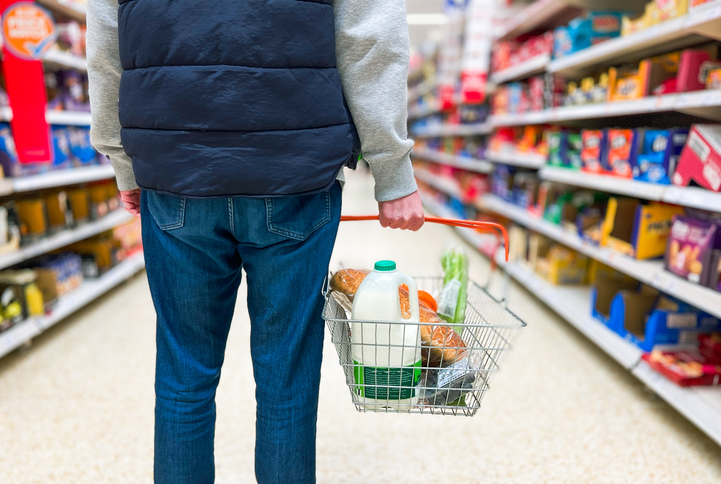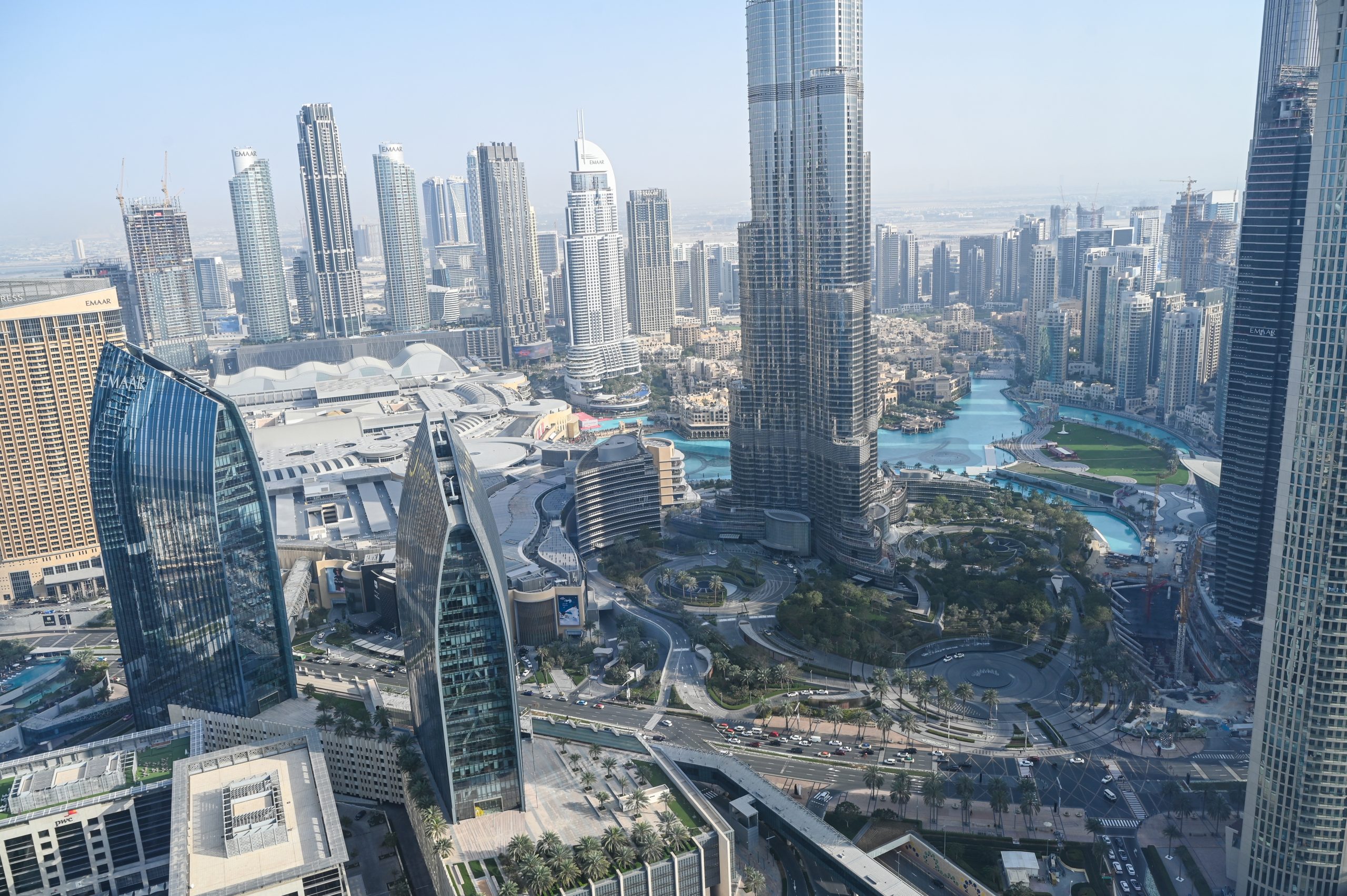HOTTER-THAN-EXPECTED INFLATION CLOUDS RATE-CUT OUTLOOK
US: Inflation eased again in January but came in above Wall Street’s expectations, clouding the Federal Reserve’s path to rate cuts and potentially giving the central bank breathing space to wait until the middle of the year.
The Labor Department reported Tuesday that consumer prices rose 3.1% in January from a year earlier, versus a December gain of 3.4%. That marked the lowest reading since June.
Still, the consumer-price index was higher than the predicted 2.9%, a disappointment for investors who hope the Fed will cut rates sooner rather than later. Rate cuts tend to help stock prices by boosting economic activity and reducing competition from bonds for investor dollars.
The release gave a nasty jolt to markets. Stocks fell sharply and bond yields rose. The Dow Jones Industrial Average slid more than 500 points, or about 1.4%, its worst one-day decline since March. For all three major U.S. stock indexes, it was their worst performance on a CPI release day since September 2022 , according to Dow Jones Market Data.
The yield on the 10-year Treasury note rose to 4.315%, bringing it to its highest level since the end of November.
Interest-rate futures, which before Tuesday’s report implied the central bank would probably begin cutting rates by its May meeting, now suggest a June start date is more likely.
Where the Fed could go from here
Investors’ belief that Fed cuts were imminent has helped fuel the rally in stocks. The Dow on Monday had hit its 12th record close of 2024.
But Tuesday’s inflation report underscores why Fed officials have been dismissive of such expectations. Some Fed officials have suggested that the pace of improvement over the past six months might overstate underlying progress in containing price pressures.
Officials have said they aren’t ready to entertain rate cuts at their next meeting, March 19-20, because they want to see more evidence that inflation is returning to their 2% target.
Fed Chair Jerome Powell has said officials want to see more evidence that inflation is returning to its 2% goal, which is measured against a separate gauge to be released later this month by the Commerce Department.
“It’s not that the data aren’t good enough. It’s that there’s really six months of data,” Powell said in an interview on “60 Minutes” earlier this month. “It doesn’t need to be better than what we’ve seen, or even as good. It just needs to be good.”
Core prices, which exclude food and energy items in an effort to better track inflation’s underlying trend, were up 3.9% in January. That was equal to December’s gain, which was the lowest since mid-2021.
From a month earlier, overall prices were up a seasonally adjusted 0.3%, and core prices were up 0.4%—larger gains than economists expected.
Two measures of inflation
The Fed’s preferred measure of inflation has been running cooler than the Labor Department’s, and analysts said that could continue in January. The figures released Tuesday calculate medical care and airfares differently, and those categories were especially strong in January. The Labor Department’s measure also puts a much higher weight on shelter costs, which for both owners and renters are derived from rents. Shelter costs accounted for 0.23 percentage point of the monthly gain in overall prices in January. Shelter costs were up 0.6% month over month.
Some Fed officials have said they are looking for evidence that a slowdown in price pressures is broadening beyond goods such as used cars, which have seen prices decline over the past year. Tuesday’s figure showed the opposite: Price declines accelerated for goods while price increases accelerated for services.
And prices are still far above where they were before the pandemic—especially for items that most Americans buy often, like groceries.
The sting of those past price increases might be part of why so many Americans remain down on the economy . An analysis conducted by Goldman Sachs economists suggests that frustration with high price levels might have contributed to low confidence readings that persisted in the early 1980s even after inflation had slipped sharply.
“It does seem like it takes a while for confidence to recover, in part because people are focused on levels rather than changes,” said Goldman chief economist Jan Hatzius .
The Labor Department’s measure of overall consumer prices was up 19.6% this January from four years earlier, just before the pandemic hit. In contrast, prices were up 8.9% in the four years ended January 2020.
Economists generally expect inflation to cool this year, though they caution the process could be bumpy. Cooling prices for newly signed leases, for example, should eventually translate into lower shelter costs.
“I can tell inflation has gotten better,” said Mike Poore, of Henderson, Ky. “That’s definitely a good thing. It’s a shame it’s not happening quicker.”
The high cost of groceries
A Bank of America Institute analysis of customer data found households tended to make far more transactions a month for food and drinks at restaurants and bars, for groceries and for gasoline than they do for other items. Labor Department figures show that prices in all three of those frequent-transaction categories are higher, relative to before the pandemic, than prices overall.
Research from University of California, Berkeley economist Ulrike Malmendier and three co-authors found that prices for items that people buy more often play an outsize role in framing their inflation expectations. “In terms of what gets ingrained in people’s brains, it’s stuff that they purchase frequently,” she said.
Other research Malmendier has conducted examines the scarring effects of inflation episodes , which can have persistent, and potentially costly, effects on people’s financial decisions. She is heartened by the fact that inflation has retreated relatively quickly from the 9.1% it hit in June 2022 —a contrast to the experience of the late 1970s and early 1980s, when inflation remained elevated for years.
“I’m a little less worried about long-lasting effects than I was in 2022,” she said.
 Copyright 2020, Dow Jones & Company, Inc. All Rights Reserved Worldwide. LEARN MORE
Copyright 2020, Dow Jones & Company, Inc. All Rights Reserved Worldwide. LEARN MORE
Chris Dixon, a partner who led the charge, says he has a ‘very long-term horizon’
Americans now think they need at least $1.25 million for retirement, a 20% increase from a year ago, according to a survey by Northwestern Mutual
This partnership marks a significant step towards Abu Dhabi’s vision of becoming a global hub for advanced materials and technological innovation.
The Abu Dhabi Department of Economic Development (ADDED) has entered into a Memorandum of Understanding (MOU) with Inovartic Investment, a prominent technology innovation company, to establish a facility in Abu Dhabi for the production of graphene and graphene-based products.
This strategic partnership represents a crucial advancement in the region’s and beyond’s capabilities for advanced material manufacturing, aligning with Abu Dhabi’s vision of becoming a global center for cutting-edge industries and technological innovation.
Graphene and graphene-based products are essential components in electronics and semiconductors, which are extensively utilized across various critical sectors, including healthcare, biotechnology, transportation, and environmental conservation.
H.E. Badr Al-Olama, Acting Director General of Economic Affairs at ADDED, said: “This partnership is a testament to Abu Dhabi’s commitment towards fostering a dynamic and diversified economy that supports new industries to ensure economic growth and prosperity. By working with Inovartic Investment, we are poised to make substantial advancements in the field of advanced material manufacturing, reinforcing our dedication to technological advancement and innovation in key sectors.”
Saif Aldarmaki, Chairman and Co-Founder of Inovartic Investment, expressed his enthusiasm, indicating that the agreement will act as a cornerstone for the future of advanced materials manufacturing.
“Our collaboration with the Abu Dhabi Department of Economic Development enhances our role as innovators and promotes sustainable growth and economic diversification for the Emirate. We look forward to the transformative impact this partnership will have on the industry and the region,” he added.
Anwar Hussein, Managing Partner and Co-Founder of Inovartic Investment said: “With this MOU, we are setting the stage for a new era of technological innovation and industrial excellence. Our partnership with the Abu Dhabi Department of Economic Development will enable us to push the boundaries of what is possible in advanced manufacturing, contributing to a more sustainable and prosperous world.”
By leveraging pioneering technologies that are integral to emerging sectors like Big Data, Artificial Intelligence, Augmented Reality and the Internet of Things, Abu Dhabi’s manufacturing sector is boosting industrial innovation, quality and efficiency. In turn, industrial excellence is set to propel the Emirate’s Falcon Economy vision, which aims to transform Abu Dhabi into an export-driven, resilient economy empowered by a highly skilled workforce to leverage advanced technologies and emerging disruptive economic trends.
Chris Dixon, a partner who led the charge, says he has a ‘very long-term horizon’
Americans now think they need at least $1.25 million for retirement, a 20% increase from a year ago, according to a survey by Northwestern Mutual




















